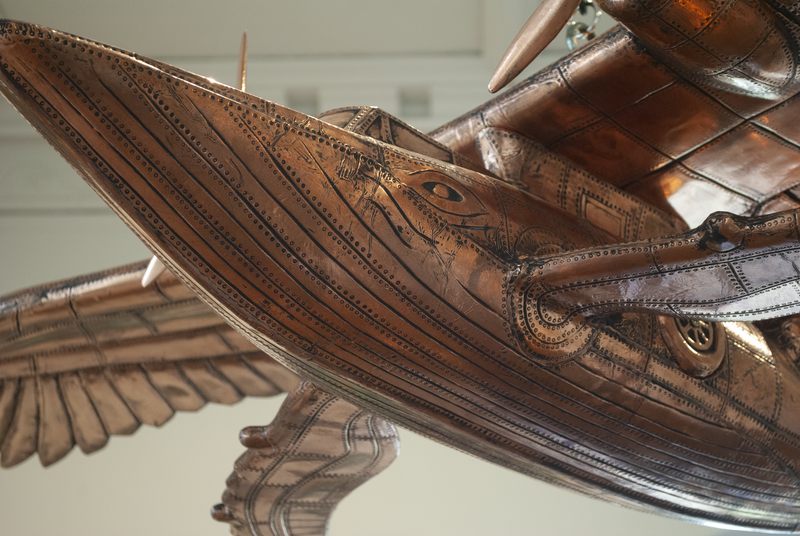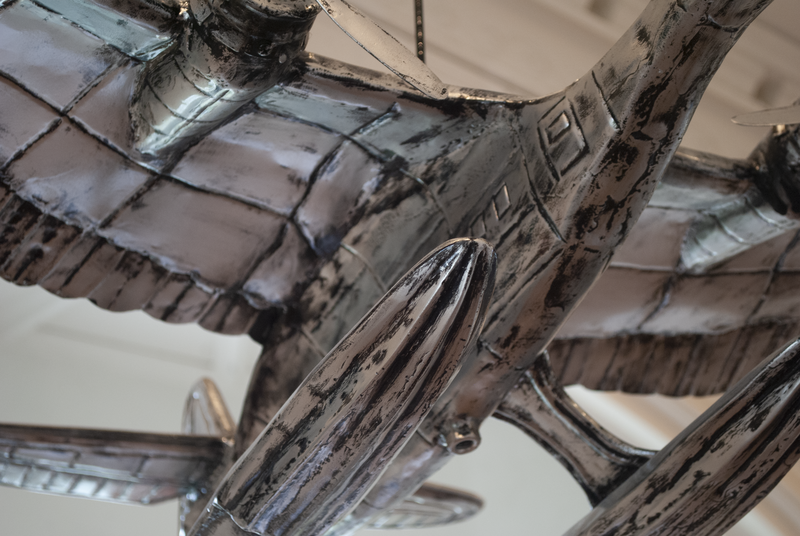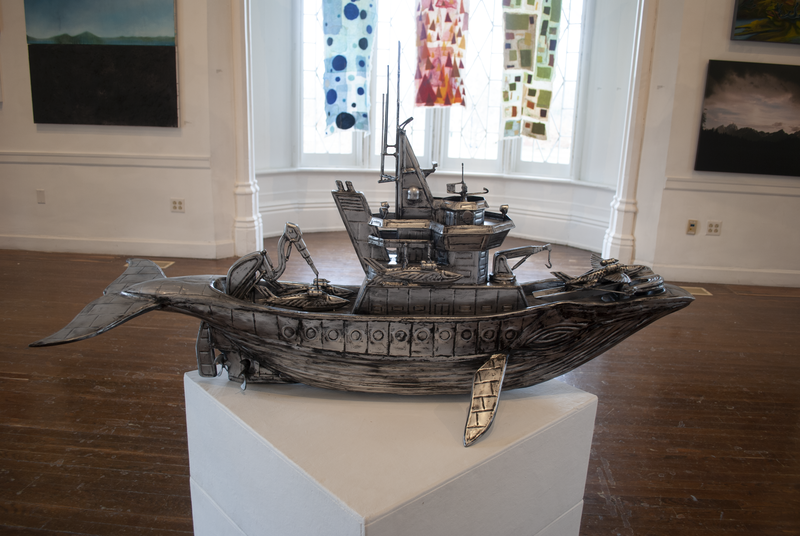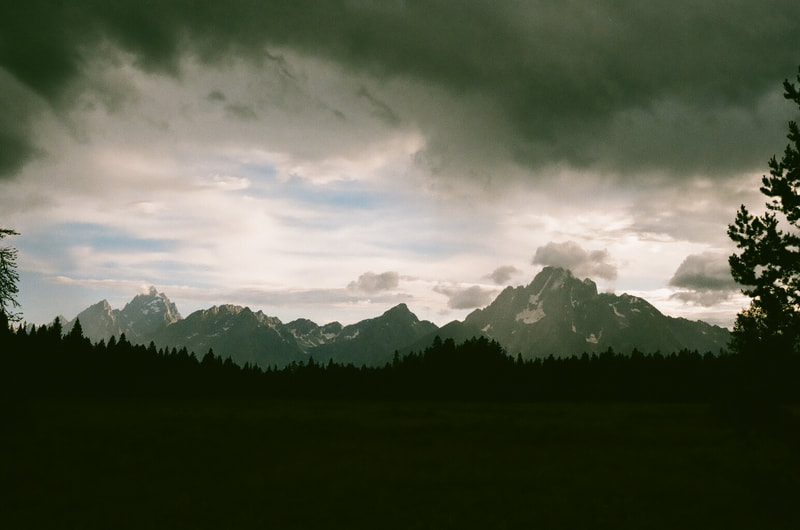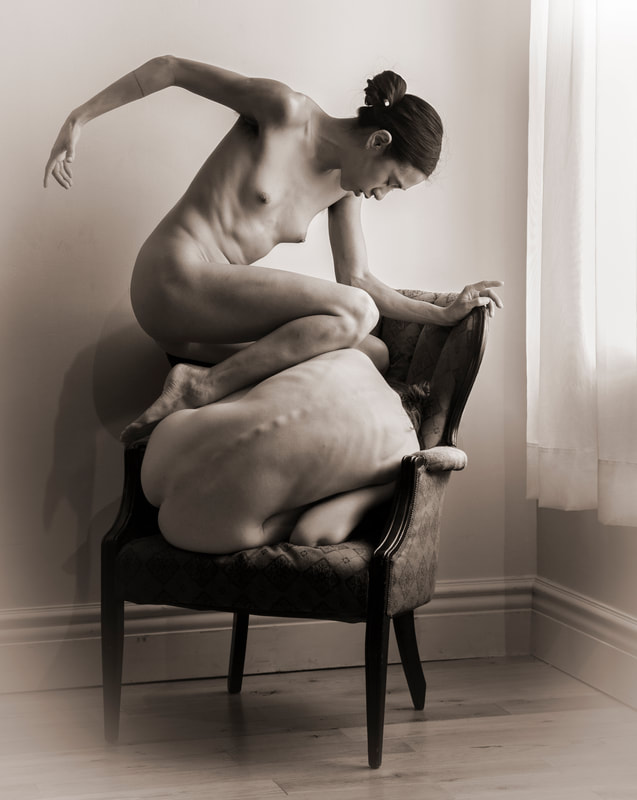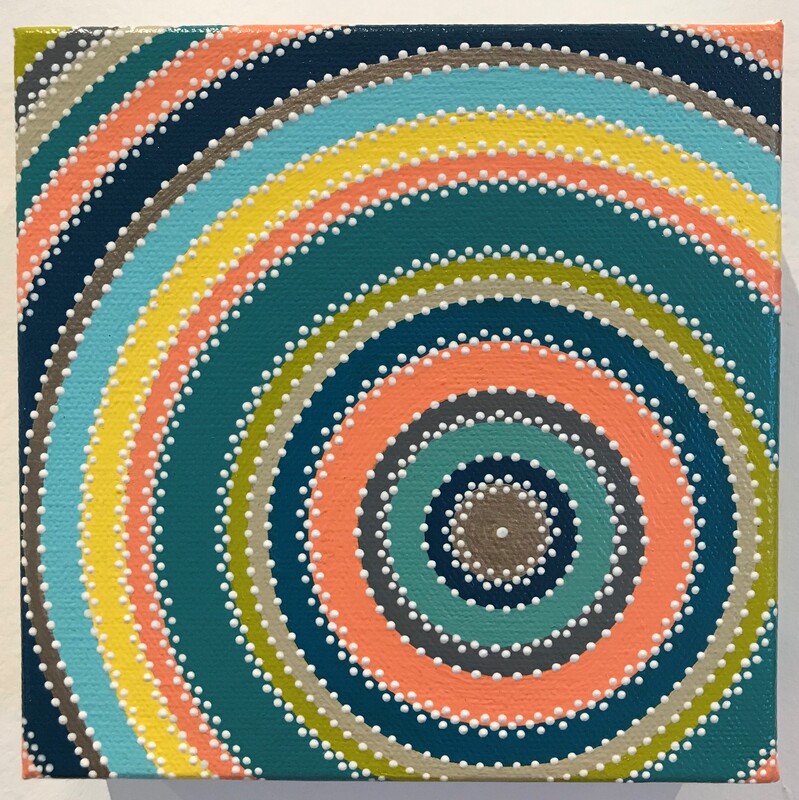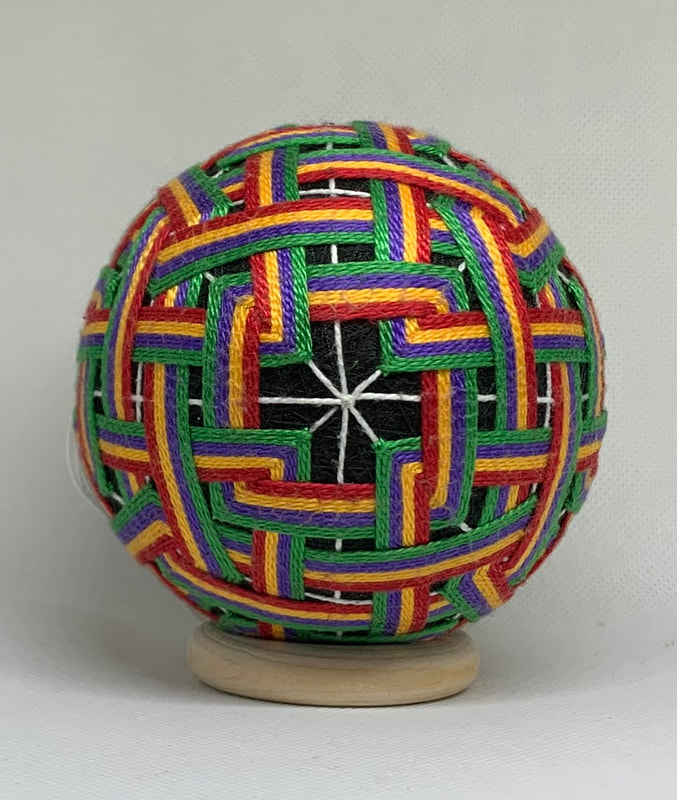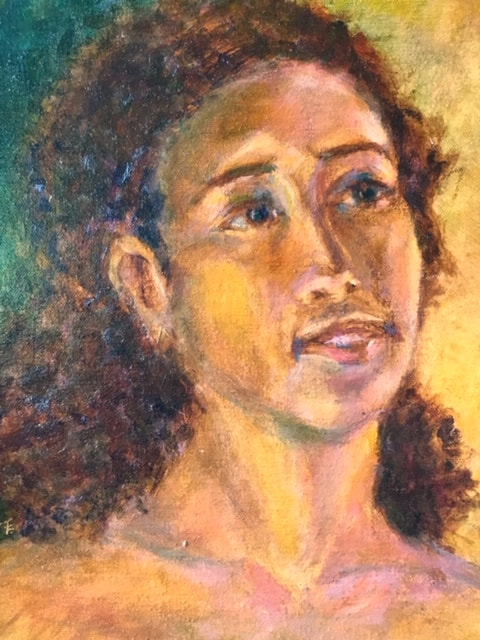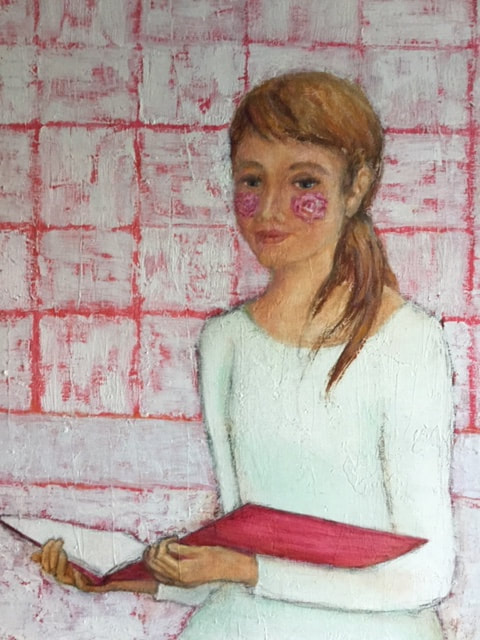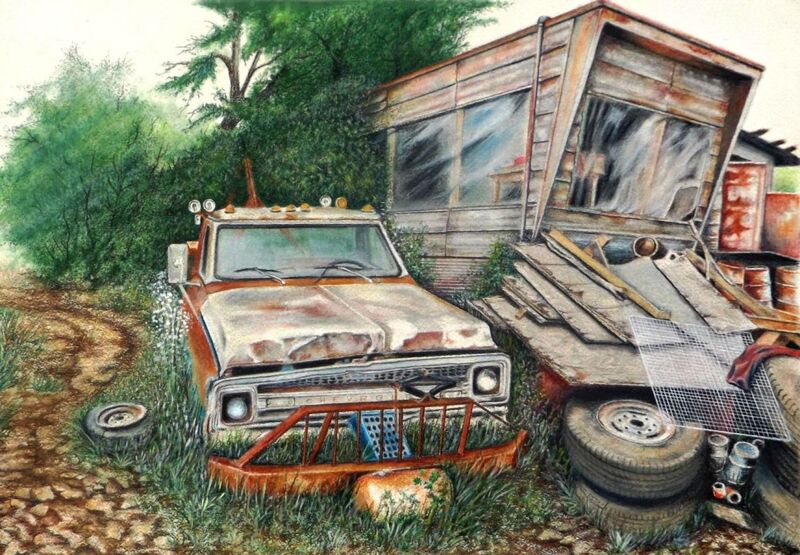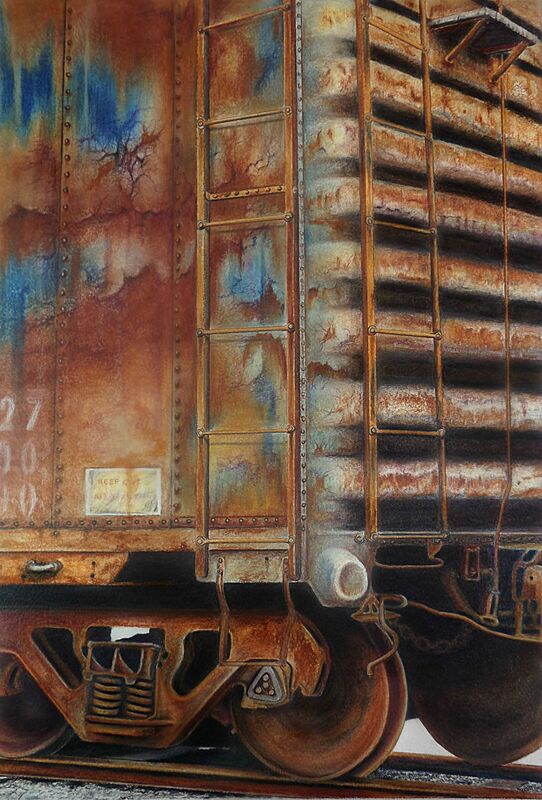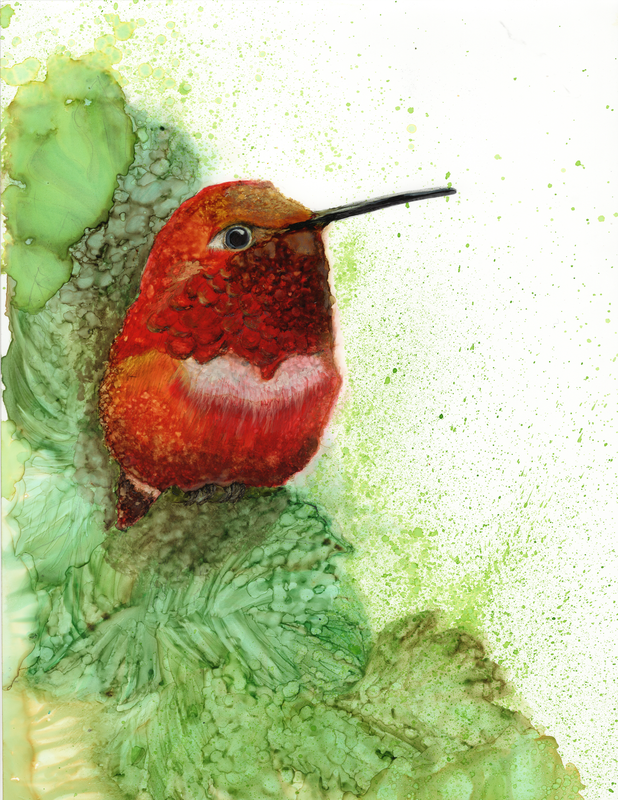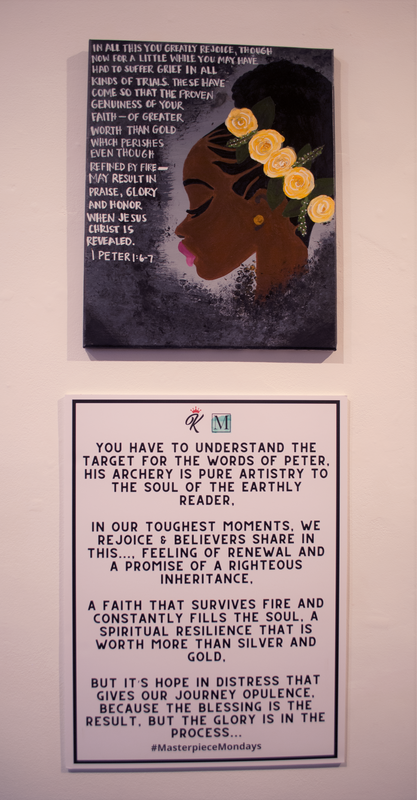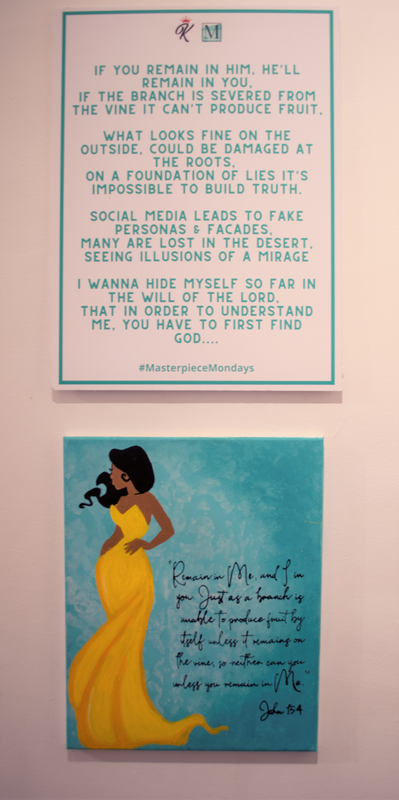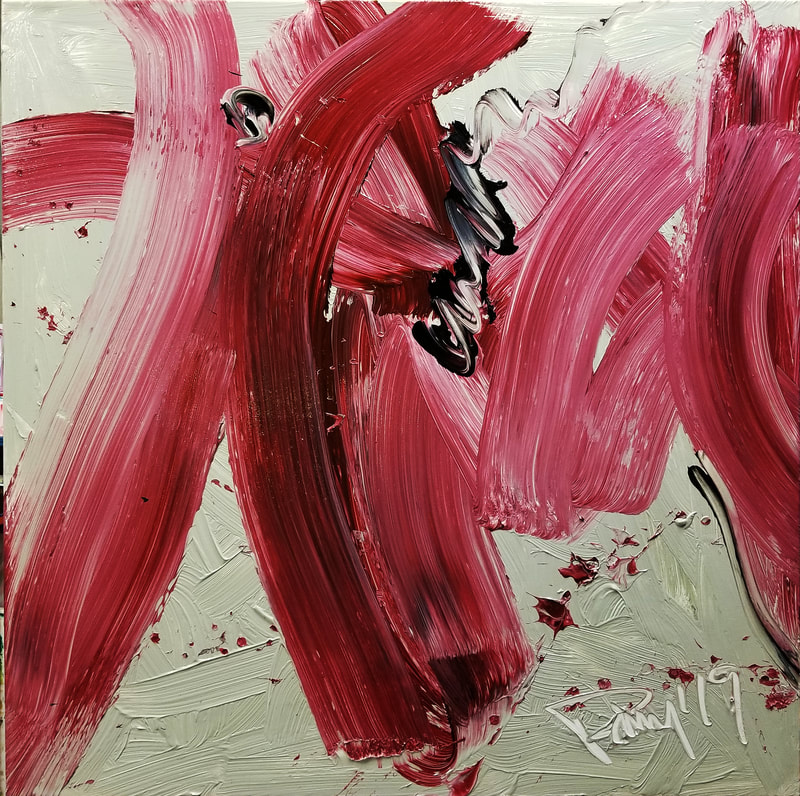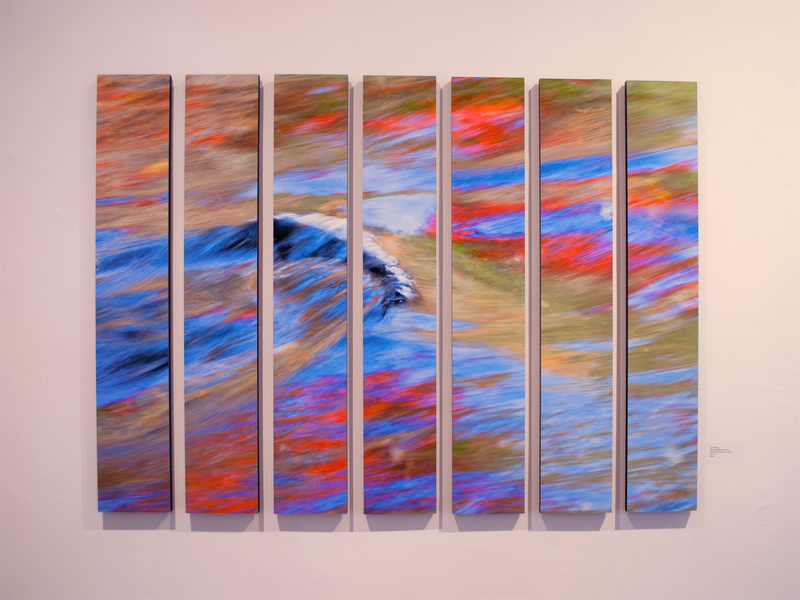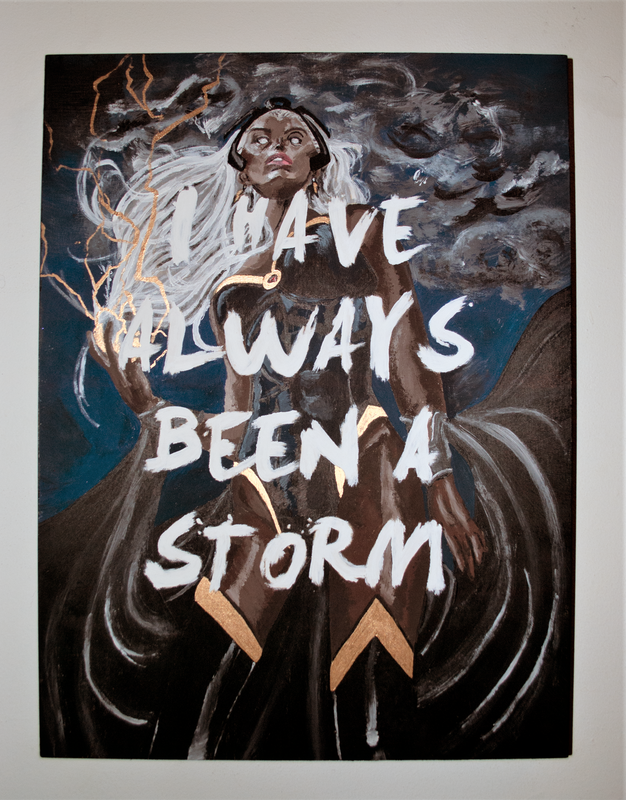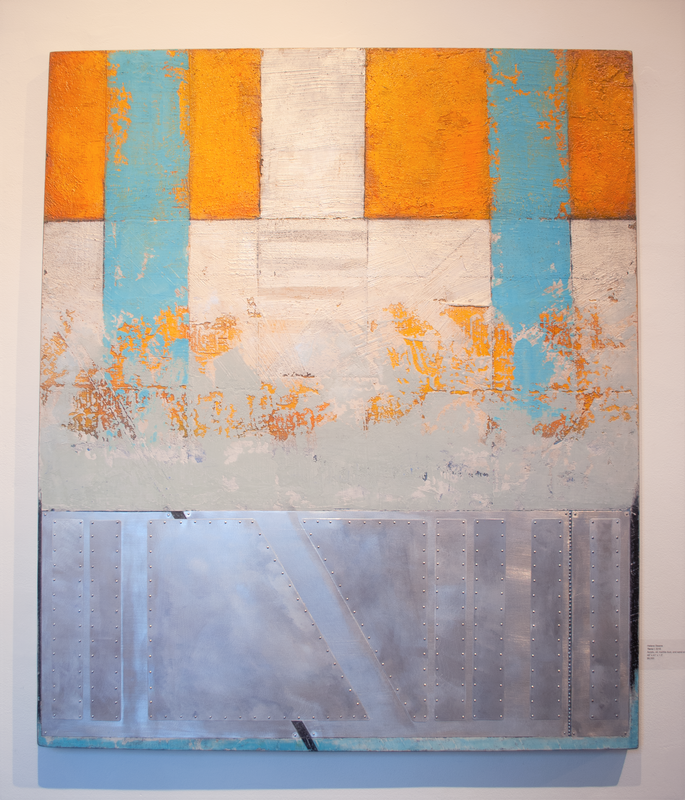Bio: I was born in Urbana Illinois in 1966. Since then I have lived in Pelican Alaska, Tallahassee Florida, Rock Hill South Carolina, Murray Kentucky, Columbus and Shelby Ohio, Barbados and now Lexington Kentucky. I earned a BFA in functional design and sculpture from Murray State University in Murray Kentucky (1988) and a MFA from Ohio State University in Columbus Ohio (1991). I have work as a self-employed studio artist for the past 30 years.
Artist Statement: The Whale Eagle Seaplane, Goose Seaplane, and Whale Ship are sculptures that were influenced by a combination of experiences I’ve had working in Barbados over the past ten years and memories and interests that I formed early in life while living in Pelican, Alaska.
When I was kid living in Alaska, our family lived on a pier surrounded by fishing boats, the ocean and the mountains of the Alaska wilderness. This is where I developed my fascination and obsession with boats and seaplanes. The act of getting in a seaplane or on a boat and being transported to a faraway place seemed magical and mysterious .
In 2009 I made my first trip to Barbados which is a small island nation in the south east Caribbean . I’ve visited numerous times since then to make Art for a restaurant called The Cliff and The Cliff Beach Club. During a visit in 2014 and 2015 I worked on a Stainless Steel Flash Gordon Rocket Ship, a stainless Flying Saucer and I started making my first hybrid sculptures which involved transforming a fish into a Zeppelin and jellyfish into hot air balloons for an elaborate gate between the restaurant by the sea. I really enjoyed the creativity involved in blending the animal and aircraft forms.
After moving to Lexington in 2017 I have focused on creating a show that features furnishings and sculptures that evoke the kinds of thoughts and feelings I experience when working and living by the ocean at an amazing restaurant. The theme of the show is “ Objects of Adventure “ and the purpose of the collection is to create a light hearted environment with elements of whimsy and humor where people feel free to exchange stories of their life adventures.
Kinetic Light Sculpture #1 represents another line of work that I have been working on over the years that addresses my more abstract interest in light, motion, color and change. Unlike my other work that has a strong narrative element, the kinetic light sculpture is more about my interest in intense sensual novelty and the pleasure found in a moment.
Artist Statement: The Whale Eagle Seaplane, Goose Seaplane, and Whale Ship are sculptures that were influenced by a combination of experiences I’ve had working in Barbados over the past ten years and memories and interests that I formed early in life while living in Pelican, Alaska.
When I was kid living in Alaska, our family lived on a pier surrounded by fishing boats, the ocean and the mountains of the Alaska wilderness. This is where I developed my fascination and obsession with boats and seaplanes. The act of getting in a seaplane or on a boat and being transported to a faraway place seemed magical and mysterious .
In 2009 I made my first trip to Barbados which is a small island nation in the south east Caribbean . I’ve visited numerous times since then to make Art for a restaurant called The Cliff and The Cliff Beach Club. During a visit in 2014 and 2015 I worked on a Stainless Steel Flash Gordon Rocket Ship, a stainless Flying Saucer and I started making my first hybrid sculptures which involved transforming a fish into a Zeppelin and jellyfish into hot air balloons for an elaborate gate between the restaurant by the sea. I really enjoyed the creativity involved in blending the animal and aircraft forms.
After moving to Lexington in 2017 I have focused on creating a show that features furnishings and sculptures that evoke the kinds of thoughts and feelings I experience when working and living by the ocean at an amazing restaurant. The theme of the show is “ Objects of Adventure “ and the purpose of the collection is to create a light hearted environment with elements of whimsy and humor where people feel free to exchange stories of their life adventures.
Kinetic Light Sculpture #1 represents another line of work that I have been working on over the years that addresses my more abstract interest in light, motion, color and change. Unlike my other work that has a strong narrative element, the kinetic light sculpture is more about my interest in intense sensual novelty and the pleasure found in a moment.
Bio: Drawing since he could pick up a magic marker, Alex DeMoll attended the School for the Creative and Performing Arts from 4th - 12th grade. He then moved to Richmond, Virginia and joined the Kinetic Imaging department of the Fine Arts School at Virginia Commonwealth University, where he focused on animation, video art, and sound art. In the fall of 2019, he moved back to his hometown of Lexington, Kentucky, and has been toiling away as a freelance artist, trying his hand at a variety of media, immersing himself in the local art scene, submitting to shows around the city, and trying to survive the past year. His artistic headspace lately has been divided into two areas of focus: the traditional and the digital, as he holds onto what he started out with, and embraces what he studied, respectively.
Artist Statement: Long before Alex DeMoll studied animation at Virginia Commonwealth University and began to delight in transforming and stretching facial features in creative and bizarre ways, he was fascinated by faces, constantly gravitating towards them as one of his primary drawing and painting subjects. Post graduation, he wanted to return to his traditional roots, and has been focusing on honing his ink illustration skills. “Stasis” (2020) was an experiment in line work, and utilized the very exaggerated features of his college projects, except on paper. He plans to develop a series of these faces and bodies, with particular attempt to capture indescribable yet palpable emotions in each subject’s visage.
Over the past year, Alex DeMoll has gotten increasingly obsessed with glitching digital images. First exposed to the concept in a college course, he jumped at the idea to delve back into glitch art and explore its possibilities when, as an intern at the Lexington Art League, he was tasked with creating promotional content for the 2019 Prohibition Exhibition. He is currently developing a series of pieces consisting of layered, heavily glitched stills from ‘80s best picture winners. Wet Carriages (2020) started out as a still from Chariots of Fire, and was then glitched first as an HEIF, then a jpeg, then a tif. Each file format glitches in very different ways, and Alex is interested in forcing these clashing and volatile patterns to exist next to each other in the same image.
Artist Statement: Long before Alex DeMoll studied animation at Virginia Commonwealth University and began to delight in transforming and stretching facial features in creative and bizarre ways, he was fascinated by faces, constantly gravitating towards them as one of his primary drawing and painting subjects. Post graduation, he wanted to return to his traditional roots, and has been focusing on honing his ink illustration skills. “Stasis” (2020) was an experiment in line work, and utilized the very exaggerated features of his college projects, except on paper. He plans to develop a series of these faces and bodies, with particular attempt to capture indescribable yet palpable emotions in each subject’s visage.
Over the past year, Alex DeMoll has gotten increasingly obsessed with glitching digital images. First exposed to the concept in a college course, he jumped at the idea to delve back into glitch art and explore its possibilities when, as an intern at the Lexington Art League, he was tasked with creating promotional content for the 2019 Prohibition Exhibition. He is currently developing a series of pieces consisting of layered, heavily glitched stills from ‘80s best picture winners. Wet Carriages (2020) started out as a still from Chariots of Fire, and was then glitched first as an HEIF, then a jpeg, then a tif. Each file format glitches in very different ways, and Alex is interested in forcing these clashing and volatile patterns to exist next to each other in the same image.
Bio: Allison Maggard is a photographer using film and digital photography mediums in Lexington, Kentucky. She is regularly inspired by travel experiences and landscapes. Allison captures her experiences during travel through photography using a Canon AE-1 film camera, a Fujifilm T-x1 mirrorless digital camera, and Polaroid film. Allison had her first solo exhibit in 2019 at the John. G Irving Gallery at Central Bank and frequently exhibits in small and local shops in Lexington, Kentucky. She runs an in-home portrait studio for artist and musician portraits. Allison has worked with Kentucky Bride, Canopy Crew, and Mango Studios. She sells prints and canvases through an online shop (found on her Instagram, @allisonmaggard) and additionally locally sells prints in vintage frames that she has refurbished.
Artist Statement: The pieces Tetons and Death Valley represent a collection of prints from my attempt to see all 50 states in the US. Forever changed by the experiences of living small and mindfully when out on the road, I have made it a personal goal to embed myself in the National Parks and Forests whenever possible- I am most at home in the trees. Capturing the vistas and views with photography is wildly important to me as a function of returning to these places and memories when I’m not exploring. Travel has always been an integral part of how I experience the world and gain perspective.
Tetons and Death Valley are two photographs from two different road trips that hold a lot of personal meaning to me. Both the aesthetics and the moments they represent hold relevance to who I am today and how I understand myself. In the image Death Valley, I’m actually in the passenger seat of a moving car. The darker blue gradient at the top of the image is actually created by the windshield, and the image is slightly less focused because we are moving. This experience taught me about vastness, and how inhospitable the earth can be. The piece Tetons is the largest film piece I have printed in my artistry. When I first arrived at this National Park, the clouds were covering the mountains entirely and this is one of the first pictures I took as the mountain range came into view in the late afternoon. This trip taught me excitement, and to this day the Grand Tetons are still my favorite mountain range.
Artist Statement: The pieces Tetons and Death Valley represent a collection of prints from my attempt to see all 50 states in the US. Forever changed by the experiences of living small and mindfully when out on the road, I have made it a personal goal to embed myself in the National Parks and Forests whenever possible- I am most at home in the trees. Capturing the vistas and views with photography is wildly important to me as a function of returning to these places and memories when I’m not exploring. Travel has always been an integral part of how I experience the world and gain perspective.
Tetons and Death Valley are two photographs from two different road trips that hold a lot of personal meaning to me. Both the aesthetics and the moments they represent hold relevance to who I am today and how I understand myself. In the image Death Valley, I’m actually in the passenger seat of a moving car. The darker blue gradient at the top of the image is actually created by the windshield, and the image is slightly less focused because we are moving. This experience taught me about vastness, and how inhospitable the earth can be. The piece Tetons is the largest film piece I have printed in my artistry. When I first arrived at this National Park, the clouds were covering the mountains entirely and this is one of the first pictures I took as the mountain range came into view in the late afternoon. This trip taught me excitement, and to this day the Grand Tetons are still my favorite mountain range.
Bio and Artist Statement: Amanda Sorrell is an amateur photographer based in Versailles, KY who uses her camera to investigate the natural beauty of the world around her. Her love for photography grew out of her passion for traveling, developing her eye during adventures in Bulgaria, Egypt, Poland, France, Peru, Greece, England, and across the United States.
During the COVID-19 pandemic, she turned her attention to the details surrounding her home, becoming intimately familiar with local insects, birds, and flora, which she has in abundance in her certified wildlife refuge backyard. Devotion is a rare departure from the undomesticated world, featuring the family dog Charlie and her son Jack.
Sorrell was born in Staffordshire, England and immigrated to the United States after meeting her husband Vince in 1988. Together, they have raised two children, Zoe and Jack.
During the COVID-19 pandemic, she turned her attention to the details surrounding her home, becoming intimately familiar with local insects, birds, and flora, which she has in abundance in her certified wildlife refuge backyard. Devotion is a rare departure from the undomesticated world, featuring the family dog Charlie and her son Jack.
Sorrell was born in Staffordshire, England and immigrated to the United States after meeting her husband Vince in 1988. Together, they have raised two children, Zoe and Jack.
Bio and Artist Statement: Anna Troxler Mitchell is a native of western North Carolina and found her way to Lexington by way of Centre College where she graduated with a BA in Studio Art and a minor in Art History. Her artwork is influenced by the classical training she received at Centre College as well as her time spent abroad in Italy where she studied plein air painting and drawing, and in Belgium where she studied classical Baroque and Golden Era style painting techniques.
Since then she has adopted a pluralistic approach to art that ranges from classical realism to abstract expressionism. While she doesn’t adhere to one genre, palette or medium, her primary work is in oil painting and drawing. Her work is inspired by nature, the human form and her everyday surroundings. Her art yields both detailed realistic portraits as well as bold conceptual studies. Her artwork is intense, focused, random, familiar and human.
She believes that art is a powerful resource for constructive dialogue, positive collaboration and enhanced understanding within a community. Her artistic goals are to pursue a Masters of Fine Arts with the intent of teaching art at the collegiate level. Her education in art has allowed her to recognize her potential as an artist and person. It has created a space for her to express her truth and overcome obstacles. It is her wish to share the potential art has with others through arts education.
Anna Troxler Mitchell’s body of work examines the nuances of everyday life and the beauty in the ordinary. Her pluralistic approach yields both detailed realistic portraits as well as bold conceptual studies. Her artwork is intense, focused, random, familiar and human. It is a search for her subjects' impetus and being. Her art breathes with life and is concerned with showing how the everyday can be spectacular. She holds a degree in Studio Art from Centre College and has studied painting in Italy and Belgium.
Since then she has adopted a pluralistic approach to art that ranges from classical realism to abstract expressionism. While she doesn’t adhere to one genre, palette or medium, her primary work is in oil painting and drawing. Her work is inspired by nature, the human form and her everyday surroundings. Her art yields both detailed realistic portraits as well as bold conceptual studies. Her artwork is intense, focused, random, familiar and human.
She believes that art is a powerful resource for constructive dialogue, positive collaboration and enhanced understanding within a community. Her artistic goals are to pursue a Masters of Fine Arts with the intent of teaching art at the collegiate level. Her education in art has allowed her to recognize her potential as an artist and person. It has created a space for her to express her truth and overcome obstacles. It is her wish to share the potential art has with others through arts education.
Anna Troxler Mitchell’s body of work examines the nuances of everyday life and the beauty in the ordinary. Her pluralistic approach yields both detailed realistic portraits as well as bold conceptual studies. Her artwork is intense, focused, random, familiar and human. It is a search for her subjects' impetus and being. Her art breathes with life and is concerned with showing how the everyday can be spectacular. She holds a degree in Studio Art from Centre College and has studied painting in Italy and Belgium.
Bio: Arturo Alonzo Sandoval earned his M.F.A. from Cranbrook Academy in 1971. In 1973, he received his first NEA Fellowship. That same year, he joined the University of Kentucky Department of Art faculty, rising to the rank of Full Professor. In 2008, he was given the university’s highest honor of an Endowed Professorship Chair in his name awarded to the College of Fine Arts. Sandoval’s work is influenced by his Hispanic and Native American lineage. His ancestry is intricately linked to his interest in the fiber arts: His mother wove 60 blankets while pregnant with him. Men on his paternal grandmother’s side were weavers of colonial Spanish textiles for over two hundred fifty years.
His fiber art works have been exhibited extensively locally and globally and are in many private and museum collections. He has been awarded two NEA Visual Arts Fellowships and several NEA supported Visiting Artist Grants. In 2007, he was elected into the American Craft Council Society of FELLOWS, the most prestigious national craft award. Sandoval retired from academia in 2017 but continues to create for exhibitions and commissions. Sandoval has one daughter, Avalon Valentine Galaglorial, who lives and works in Lexington, Kentucky.
Artist Statement: In 2016 when I saw a graffiti image of Trump and Putin locked in a kiss on Facebook I Immediately saw the significance of this image as it may relate to the current investigations surrounding Russia’s alleged influence in the 2016 Presidential election and whether Trump and Putin indeed were “secret” political/business friends. These two images are a metaphor for my vision of this alleged covert friendship and the probabilities it may hold for global issues of military buildup and economic shift. In Dark Future Putin is on top representing how he is controlling the relationship with Trump and this could lead to covert military activities that may somehow affect negatively on a global scale.
His fiber art works have been exhibited extensively locally and globally and are in many private and museum collections. He has been awarded two NEA Visual Arts Fellowships and several NEA supported Visiting Artist Grants. In 2007, he was elected into the American Craft Council Society of FELLOWS, the most prestigious national craft award. Sandoval retired from academia in 2017 but continues to create for exhibitions and commissions. Sandoval has one daughter, Avalon Valentine Galaglorial, who lives and works in Lexington, Kentucky.
Artist Statement: In 2016 when I saw a graffiti image of Trump and Putin locked in a kiss on Facebook I Immediately saw the significance of this image as it may relate to the current investigations surrounding Russia’s alleged influence in the 2016 Presidential election and whether Trump and Putin indeed were “secret” political/business friends. These two images are a metaphor for my vision of this alleged covert friendship and the probabilities it may hold for global issues of military buildup and economic shift. In Dark Future Putin is on top representing how he is controlling the relationship with Trump and this could lead to covert military activities that may somehow affect negatively on a global scale.
Bio: Bill Cole was born in Hampton, Virginia in 1962 and lived in Newport News and Williamsburg VA through his college years. He moved to Lexington in 1985 to pursue a Ph.D. in Sociology which was not completed. After spending 15 years teaching at the University of Kentucky and Morehead State University and a decade in the real estate industry Bill became a full-time photographer and photographic educator. Today he is a partner in Three O Studios in Lexington and an instructor at the Lexington School of Photography. He has been married to Christine Cole since 1986 and has one daughter who lives and studies Tango in Buenos Aires, Argentina.
Artist Statement: As a very young child, I learned to tell stories with film from an award-winning photojournalist. She taught me to look below the surface, to focus on the unknown and unacknowledged emotions of the people in my view. I learned to study light from another master who taught me to be a perfectionist and to make an image that reflected what I wanted to see in the photograph in addition to what was already there. The two of them taught me to be an artist.
Underlying it all is the beauty of light. My camera allows me to study the beauty of light as it passes around or over or through something. I love capturing the subtle influences of shades as it bends or wanders or changes. The interplay between light and subject is a source of unending fascination. I spend most of my artistic life in the shadows, photographing in low light situations that point to the hidden mysteries, uncertainties, and fears of our lives. Where there is light there is shadow and the shadows compel me to explore them.
Today I use my camera to produce images that excite and compel me. I often focus on the rich history of bourbon in the Commonwealth because of the incredible stories contained within that industry. I photograph fine art nudes to explore the perpetual beauty and fascination with the human body but also to explore the lines and shapes and figures of the model. I love casting homage to great artists of the past and the immortal images and pieces they have created. Creating images that ask the viewer to look deeper and to see the story and the emotion present in the world. It is my goal to share those passions with the viewer and ask them to explore with me.
Artist Statement: As a very young child, I learned to tell stories with film from an award-winning photojournalist. She taught me to look below the surface, to focus on the unknown and unacknowledged emotions of the people in my view. I learned to study light from another master who taught me to be a perfectionist and to make an image that reflected what I wanted to see in the photograph in addition to what was already there. The two of them taught me to be an artist.
Underlying it all is the beauty of light. My camera allows me to study the beauty of light as it passes around or over or through something. I love capturing the subtle influences of shades as it bends or wanders or changes. The interplay between light and subject is a source of unending fascination. I spend most of my artistic life in the shadows, photographing in low light situations that point to the hidden mysteries, uncertainties, and fears of our lives. Where there is light there is shadow and the shadows compel me to explore them.
Today I use my camera to produce images that excite and compel me. I often focus on the rich history of bourbon in the Commonwealth because of the incredible stories contained within that industry. I photograph fine art nudes to explore the perpetual beauty and fascination with the human body but also to explore the lines and shapes and figures of the model. I love casting homage to great artists of the past and the immortal images and pieces they have created. Creating images that ask the viewer to look deeper and to see the story and the emotion present in the world. It is my goal to share those passions with the viewer and ask them to explore with me.
Bio and Artist Statement: Blake Snyder Eames is a professional artist who has exhibited her work in multiple venues for more than 20 years. Her paintings, design, murals, and furniture pieces can be found in homes, businesses, and collections across the country and beyond. Her style is pop-art infused and art deco inspired, resulting in vibrant patterns that inspire the senses and soothe the mind’s desire for structure. Well known for her bold, geometric paintings, Eames is also the owner of Blake Eames Design, an independent enterprise specializing in commercial and residential interior design and furniture redesign. Her art and design studio are housed in a refurbished gas station on Old Vine Street in downtown Lexington. In her art, Eames strives for graphic perfection, by lining textural dots of paint interwoven with bursts of color that create angles for the eye to follow, generating a movement that integrates all levels of the composition. Inter visible objects, or those that share a direct line of sight with one another, propel the viewer in new directions and draw him/her in more deeply, where the visceral appeal to the eye becomes a mental investigation of the process.
Eames’s pristine hand fabrication conveys the artistic energy of the pieces, sometimes amplified and sometimes subdued, but always evolving and progressing into its final form. Color as the subject is also a product of mood and further inspires the viewer to see what can be, to evaluate the environment in a new way, and to delight in the unexpected. Eames is a lifelong resident of Lexington, Kentucky, where she lives with her musician husband, Willie Eames, and their two children in a century-old restored house downtown.
Eames’s pristine hand fabrication conveys the artistic energy of the pieces, sometimes amplified and sometimes subdued, but always evolving and progressing into its final form. Color as the subject is also a product of mood and further inspires the viewer to see what can be, to evaluate the environment in a new way, and to delight in the unexpected. Eames is a lifelong resident of Lexington, Kentucky, where she lives with her musician husband, Willie Eames, and their two children in a century-old restored house downtown.
Bio: Brett Hartsfield is a versatile artist, working in graphite, charcoal, oil, and acrylic. She is also an accomplished muralist and illustrator. She is primarily self-taught but has taken a variety of online instruction from many classically trained prominent artists and classes from the School of the Art Institute, Chicago. Brett’s work ranges from abstract to portraiture and her focus is often creating the human face or form using unique gesture and line variation.
Artist Statement: Painting and drawing portraits are my passion. It's always thrilling to experience the moment a work takes on a life of its own. One instant there is an amalgamation of shapes on the canvas surface and boom, with the addition of a single stroke it's transformed into a lifelike entity. Many of the greatest masterpieces of Western Art have been commissioned portrait paintings. My inspiration is drawn from the art of the great academic masters, such as Rembrandt, Van Dyke, Sir Henry Raeburn, Ingres, J. L. David, and John Singer Sargent. My challenge, as an artist, is to live up to the standard of excellence they've established. Michelangelo said the greater danger is not that our hopes are too high and we fail to reach them; it's that they're too low and we do.
A great portrait painting goes far beyond merely capturing a faithful likeness. The physical process of applying paint with a brush or pencil to paper creates unique dynamic energy, impossible to replicate through any mechanical process. Painting and drawing, unlike photography, allows infinite opportunities to edit what is observed, whether working from life or from a photo, playing things up or down in order to create something that goes far beyond the surface. I use my reference photos, as a starting point. I alter them significantly in order to achieve a final composition that best conveys my sense of the sitter. Each element in my painting or drawing must be in perfect harmony with the overall composition for me to consider it successful.
Artist Statement: Painting and drawing portraits are my passion. It's always thrilling to experience the moment a work takes on a life of its own. One instant there is an amalgamation of shapes on the canvas surface and boom, with the addition of a single stroke it's transformed into a lifelike entity. Many of the greatest masterpieces of Western Art have been commissioned portrait paintings. My inspiration is drawn from the art of the great academic masters, such as Rembrandt, Van Dyke, Sir Henry Raeburn, Ingres, J. L. David, and John Singer Sargent. My challenge, as an artist, is to live up to the standard of excellence they've established. Michelangelo said the greater danger is not that our hopes are too high and we fail to reach them; it's that they're too low and we do.
A great portrait painting goes far beyond merely capturing a faithful likeness. The physical process of applying paint with a brush or pencil to paper creates unique dynamic energy, impossible to replicate through any mechanical process. Painting and drawing, unlike photography, allows infinite opportunities to edit what is observed, whether working from life or from a photo, playing things up or down in order to create something that goes far beyond the surface. I use my reference photos, as a starting point. I alter them significantly in order to achieve a final composition that best conveys my sense of the sitter. Each element in my painting or drawing must be in perfect harmony with the overall composition for me to consider it successful.
Bio: Brian Connors Manke is an artist, photographer, and musician in Lexington. Actually, he occasionally sets crayons on fire but he wouldn’t consider himself an artist because of that; he revels in the moments he captures images of lines and light, but a professional photographer he is not; and he is beyond fortunate to play ridiculously loud trombone in a couple of bands, but he wouldn’t equate that to being labeled a musician. What he does consider himself is an amateur at most everything, and he enjoys the element of the unknown that comes along with not being an expert.
Artist Statement: I never stopped using crayons as an adult, and have long been bewildered as to their designation as simply an art tool for children. When you first learn to color, draw, or create anything with a crayon in your hand, the brain is racing with endless possibilities. That continues every time I do a new piece - I usually have no road map, and I am always discovering new ways that a box of Crayola crayons can inspire.
Artist Statement: I never stopped using crayons as an adult, and have long been bewildered as to their designation as simply an art tool for children. When you first learn to color, draw, or create anything with a crayon in your hand, the brain is racing with endless possibilities. That continues every time I do a new piece - I usually have no road map, and I am always discovering new ways that a box of Crayola crayons can inspire.
Bio: Brooke Harris is a fluid artist who calls Lexington, Kentucky home. While she received a B.A. in Journalism at Asbury University and an MFA in Creative Writing from Spalding University, she much prefers the paintbrush to the pen. She uses fluid paint to create abstract scenes of time and space. While the paintings are non-referential, they are strangely familiar and evoke memory and emotion. They depict metaphors of something greater than the physical: a spiritual reality expressed in paint. Her work can be seen at the University of Kentucky Hospital and Artique Art Gallery among other local boutiques. Brooke teaches painting classes and also loves to read and write. She never met a slice of pie she didn’t like. Contact Brooke at brookeerinharris.com
Artist Statement: My work is the result of my fascination to connect the physical realm with the spiritual one. The fluid acrylic paintings I create are abstractions of the tangible nature that surrounds humankind. Although non-referential, the paintings are strangely familiar and evoke memory and emotion. Many look like fluid water, galaxies, and natural stones but have deeper moments of reflection. They depict metaphors of something greater than the physical: a spiritual reality expressed in paint.
I use fluid abstract techniques including brushwork as well as pouring paint directly onto the canvas for manipulation. There, I use my hands and even my own breath to direct the paint to flow naturally. The varied techniques allow me to be present in the process of creation. The very breath in my lungs pulls the paint across the canvas and into existence. Like many artists, I am inspired by nature when creating a composition, but not only its visual beauty strikes me. I am inspired by the feeling one has when communing in nature when she is in connection to a Higher Creator. With this thought process, I do not dwell on the mere visual description of a subject, but on the essence of it instead. The question is not: “What does the water look like?” but “How does the water feel?”
Major elements of art that I consider every time I paint are color and movement. Color theory is an important component of my work. I portray light and depth with the use of largely analogous colors and tints and shades of deep color. My paintings create movement by blending colors and placing them specifically in unique combinations. The juxtaposition of light and dark creates swirling depth and allows the viewer to enter into a transcendent space where color creates form, movement, and time.
An example of this is seen in my work, Darkness Trembles. The layering of black, purple, and burgundy create a swirling void. The placement of purple, white, and gold over the black hole gives it depth and portrays light swallowing the darkness. This painting was created as an expression of worship and prayer at a time when I needed a breakthrough. Just as in life, light overcomes the darkness. Each piece is created over several weeks with large amounts of drying time. Many times, I return to a piece to see new formations of paint have percolated to the surface. The paint and medium interact with one another to form new shapes and lines. I certainly enjoy this aspect, as it is a metaphor for my main motivation to paint - a spiritual presence in the physical world.
Artist Statement: My work is the result of my fascination to connect the physical realm with the spiritual one. The fluid acrylic paintings I create are abstractions of the tangible nature that surrounds humankind. Although non-referential, the paintings are strangely familiar and evoke memory and emotion. Many look like fluid water, galaxies, and natural stones but have deeper moments of reflection. They depict metaphors of something greater than the physical: a spiritual reality expressed in paint.
I use fluid abstract techniques including brushwork as well as pouring paint directly onto the canvas for manipulation. There, I use my hands and even my own breath to direct the paint to flow naturally. The varied techniques allow me to be present in the process of creation. The very breath in my lungs pulls the paint across the canvas and into existence. Like many artists, I am inspired by nature when creating a composition, but not only its visual beauty strikes me. I am inspired by the feeling one has when communing in nature when she is in connection to a Higher Creator. With this thought process, I do not dwell on the mere visual description of a subject, but on the essence of it instead. The question is not: “What does the water look like?” but “How does the water feel?”
Major elements of art that I consider every time I paint are color and movement. Color theory is an important component of my work. I portray light and depth with the use of largely analogous colors and tints and shades of deep color. My paintings create movement by blending colors and placing them specifically in unique combinations. The juxtaposition of light and dark creates swirling depth and allows the viewer to enter into a transcendent space where color creates form, movement, and time.
An example of this is seen in my work, Darkness Trembles. The layering of black, purple, and burgundy create a swirling void. The placement of purple, white, and gold over the black hole gives it depth and portrays light swallowing the darkness. This painting was created as an expression of worship and prayer at a time when I needed a breakthrough. Just as in life, light overcomes the darkness. Each piece is created over several weeks with large amounts of drying time. Many times, I return to a piece to see new formations of paint have percolated to the surface. The paint and medium interact with one another to form new shapes and lines. I certainly enjoy this aspect, as it is a metaphor for my main motivation to paint - a spiritual presence in the physical world.
Bio: I have been a professional seamstress my entire adult life. Working with fiber is second nature to me. I have worked in the Lexington area over the past 25 years, primarily with custom window treatments. I have always defined myself as a craftsperson more than an artist, where form followed function in aesthetically beautiful ways. Having retired from this work, I turned my creative outlet from fabrics to embroidery.
As a Japanese-American, Temari speaks to my heritage and my soul. It opened up a creative world that brought a, previously unknown, a joy to my existence. Unfortunately, sewing and embroidery have taken its toll and I have been forced to put down my needles. My current collection may well be the only Temari works that I will produce. I hope not, but I am now looking towards other creative and artistic outlets and, hopefully, the universe will guide me to where I need to be as an artist and craftsperson.
Artist Statement: Temari combines the beauty of color and texture, with the precision of mathematics and geometry, on a spherical canvas. When completed, there is no beginning and no end. Temari embodies the essence of Wabi-Sabi: the perfectly imperfect. No sphere is perfectly round; no design perfectly symmetrical. But it is in the attempt that I am grounded and find serenity.
As a Japanese-American, Temari speaks to my heritage and my soul. It opened up a creative world that brought a, previously unknown, a joy to my existence. Unfortunately, sewing and embroidery have taken its toll and I have been forced to put down my needles. My current collection may well be the only Temari works that I will produce. I hope not, but I am now looking towards other creative and artistic outlets and, hopefully, the universe will guide me to where I need to be as an artist and craftsperson.
Artist Statement: Temari combines the beauty of color and texture, with the precision of mathematics and geometry, on a spherical canvas. When completed, there is no beginning and no end. Temari embodies the essence of Wabi-Sabi: the perfectly imperfect. No sphere is perfectly round; no design perfectly symmetrical. But it is in the attempt that I am grounded and find serenity.
Bio: Carsen Bryant is a Central Kentucky Photographer and recent graduate of Eastern Kentucky University, with a Bachelor of Fine Art. She has chosen to explore the relationship between young adults and their mental health through a combination of traditional film, instant cameras, and digital techniques. Recently, she has exhibited at the Lexington Art League, Gallery on Main, Art Center of the Bluegrass, Giles Gallery, and the John Grant Crabbe Library. She currently serves as the University Photographer at Eastern Kentucky University.
Artist Statement: When I graduated from college, I was left with what felt like no direction - a constant knot in my stomach as I worried about what was going to come next. I went from having a very structured, jam-packed schedule to constant free time. Having no deadlines to meet or projects to finish was much less exciting than it sounded. Getting out of bed got harder and harder, and I began to lose the passion for the thing I worked so hard at. The struggle I faced after graduation motivated me to capture the neglected, often overlooked parts of my college town.
Home Full showcases the feeling of being unseen and forgotten. To most, the house in the photo is one that is not worth a second glance. People frequently say the house is “condemned and trashed.” To the woman who wanders around town with her shopping cart of belongings day in and day out, this house is home. This series was edited using a dreamy mix of hues. The purples and pinks together create a hazy glow to represent my mindset at the time. I shot all of the photos at high speeds from my car window. I physically wandered around town much like I mentally wandered through life after college, aimlessly. I chose subjects that spoke to me as being forgotten and under-appreciated.
Artist Statement: When I graduated from college, I was left with what felt like no direction - a constant knot in my stomach as I worried about what was going to come next. I went from having a very structured, jam-packed schedule to constant free time. Having no deadlines to meet or projects to finish was much less exciting than it sounded. Getting out of bed got harder and harder, and I began to lose the passion for the thing I worked so hard at. The struggle I faced after graduation motivated me to capture the neglected, often overlooked parts of my college town.
Home Full showcases the feeling of being unseen and forgotten. To most, the house in the photo is one that is not worth a second glance. People frequently say the house is “condemned and trashed.” To the woman who wanders around town with her shopping cart of belongings day in and day out, this house is home. This series was edited using a dreamy mix of hues. The purples and pinks together create a hazy glow to represent my mindset at the time. I shot all of the photos at high speeds from my car window. I physically wandered around town much like I mentally wandered through life after college, aimlessly. I chose subjects that spoke to me as being forgotten and under-appreciated.
Bio: The artwork created by Cate Wagoner falls between American Impressionism and Realism in style. The subject matter is diverse because it reflects her life and interests. Capturing the spirit of what she sees is the most important element to her, usually colorfully painted in oil. Her drawings are done in charcoal, Conte' and/or pastel.
Her love of the South is reflected in the locations where her work can be seen. She is represented by Allison Sprock Fine Art in Charlotte, North Carolina. Near her home in Lexington, Kentucky, she has work on display at Gallery Z in Carlisle, and often exhibits at ArtsPlace Gallery, Christ Church's Art at the Cathedral Gallery, and the Artists' Attic. She has also curated shows at all of the latter, as well as the Hopewell Museum in Paris, KY. She is an Associate Member at Artists' Attic and a member of the Lexington Art League. A founding member of the Courthouse Square Arts Guild, she is known as a teacher and advocate for the Arts in the central Kentucky area.
Cate graduated from Moore College of Art and Design in Philadelphia and studied at the Corcoran College of Art in Washington, D.C. She continues to attend workshops in the United States and Europe. The most influential was under Wolf Kahn at the National Academy in New York, when she decided to forego a vibrant career in Interior Design to pursue her lifelong passion for Fine Art.
Artist Statement: Telling a story, appreciating the human spirit, and creating beauty….as artists, we are fortunate to be able to continue our efforts to connect with others in these challenging times.
Her love of the South is reflected in the locations where her work can be seen. She is represented by Allison Sprock Fine Art in Charlotte, North Carolina. Near her home in Lexington, Kentucky, she has work on display at Gallery Z in Carlisle, and often exhibits at ArtsPlace Gallery, Christ Church's Art at the Cathedral Gallery, and the Artists' Attic. She has also curated shows at all of the latter, as well as the Hopewell Museum in Paris, KY. She is an Associate Member at Artists' Attic and a member of the Lexington Art League. A founding member of the Courthouse Square Arts Guild, she is known as a teacher and advocate for the Arts in the central Kentucky area.
Cate graduated from Moore College of Art and Design in Philadelphia and studied at the Corcoran College of Art in Washington, D.C. She continues to attend workshops in the United States and Europe. The most influential was under Wolf Kahn at the National Academy in New York, when she decided to forego a vibrant career in Interior Design to pursue her lifelong passion for Fine Art.
Artist Statement: Telling a story, appreciating the human spirit, and creating beauty….as artists, we are fortunate to be able to continue our efforts to connect with others in these challenging times.
Artist Statement:
Corona Quipu - Counting the Days
Last March I was getting ready for a studio sale of fabric I had hand-dyed, undyed silk and cotton, and other materials that I no longer needed. The fabric was piled all over my dining room table sorted into various piles and in storage containers stacked on the dining room floor when “BAM” we were all blindsided by the COVID 19 - the coronavirus. Everything I had planned and scheduled was canceled. For me, It was like hitting a brick wall making it difficult to regroup and start working on my art again. Sometime during the shutdown, a drive by art exhibit was organized for Lexington. I decided to participate by using up some of my hand-dyed cotton fabric to sewing it together and cutting in strips to count the days from the time the CDC had warned the public of the virus on January 9, 2020, to the date of the drive-by art exhibit. I created 7 panels consisting of 10 strips of fabric pieces each to represent 70 days. For each additional day, I added a knot to 1 strip. I posted a picture to my FB page with the title “Counting the Days”. One of my friends who is a Fiber Arts Professor at Northern Michigan University commented, “So a Corona Quipu!” I had to look that up. A Quipu is a technique used by the Incan civilization to record information by knotting colored threads in various patterns. Hence the name change to “Corona Quipu - Counting the Days”. I am currently on my 4th row of knots. The Quipu has been hanging in the morning sun and has endured wind, rain, hail. Whatever Mother Nature has thrown at it. The fabric has faded from the sun and it’s looking shabby but I’m going to keep tying knots until we defeat this virus.
Tapestry I and Floating III
My Grandmother Legge quilted, embroidered, hooked rugs, and sewed her children’s clothes. My Aunt Mary crocheted and tatted. My Aunt Opal taught me to embroider and sew when I was 8 or 9 years old. In their tradition, my work combines vintage and antique needlework with contemporary images and objects from nature. I have been collecting vintage and antique textiles for more years than I can count. I like to combine the textiles with wool in Nuno felt pieces and in printmaking in color overlay monotypes. I use oil-based litho ink colors cyan, yellow, and magenta to create my prints. I usually work on a series of 4 at a time, printing one color at a time, spreading the ink, and manipulating it on a polyester sheet. I go back and forth in the printing process using a press, combining the first color prints with the ghost images to achieve the final print. “Tapestry I” is named after Carol King song, a memory from my younger days. “Floating III” combination of a vintage doily and a ginkgo leaf. I have been fascinated with and enchanted by ginkgo leaves since my college days. There was a very old, very large ginkgo tree in front of the art building at Ohio Wesleyan University where I received my BFA in art. I have been collecting and preserving ginkgo leaves ever since that time.
Corona Quipu - Counting the Days
Last March I was getting ready for a studio sale of fabric I had hand-dyed, undyed silk and cotton, and other materials that I no longer needed. The fabric was piled all over my dining room table sorted into various piles and in storage containers stacked on the dining room floor when “BAM” we were all blindsided by the COVID 19 - the coronavirus. Everything I had planned and scheduled was canceled. For me, It was like hitting a brick wall making it difficult to regroup and start working on my art again. Sometime during the shutdown, a drive by art exhibit was organized for Lexington. I decided to participate by using up some of my hand-dyed cotton fabric to sewing it together and cutting in strips to count the days from the time the CDC had warned the public of the virus on January 9, 2020, to the date of the drive-by art exhibit. I created 7 panels consisting of 10 strips of fabric pieces each to represent 70 days. For each additional day, I added a knot to 1 strip. I posted a picture to my FB page with the title “Counting the Days”. One of my friends who is a Fiber Arts Professor at Northern Michigan University commented, “So a Corona Quipu!” I had to look that up. A Quipu is a technique used by the Incan civilization to record information by knotting colored threads in various patterns. Hence the name change to “Corona Quipu - Counting the Days”. I am currently on my 4th row of knots. The Quipu has been hanging in the morning sun and has endured wind, rain, hail. Whatever Mother Nature has thrown at it. The fabric has faded from the sun and it’s looking shabby but I’m going to keep tying knots until we defeat this virus.
Tapestry I and Floating III
My Grandmother Legge quilted, embroidered, hooked rugs, and sewed her children’s clothes. My Aunt Mary crocheted and tatted. My Aunt Opal taught me to embroider and sew when I was 8 or 9 years old. In their tradition, my work combines vintage and antique needlework with contemporary images and objects from nature. I have been collecting vintage and antique textiles for more years than I can count. I like to combine the textiles with wool in Nuno felt pieces and in printmaking in color overlay monotypes. I use oil-based litho ink colors cyan, yellow, and magenta to create my prints. I usually work on a series of 4 at a time, printing one color at a time, spreading the ink, and manipulating it on a polyester sheet. I go back and forth in the printing process using a press, combining the first color prints with the ghost images to achieve the final print. “Tapestry I” is named after Carol King song, a memory from my younger days. “Floating III” combination of a vintage doily and a ginkgo leaf. I have been fascinated with and enchanted by ginkgo leaves since my college days. There was a very old, very large ginkgo tree in front of the art building at Ohio Wesleyan University where I received my BFA in art. I have been collecting and preserving ginkgo leaves ever since that time.
Bio: Cheryle is a Lexington, Kentucky artist who has lived in the state since she was 8 years old. Her mother and father were Kentucky natives. Her mother's roots go back to the days when they traveled with their relation Daniel Boone to settle in Eastern Kentucky. The family stayed there until
the 20's & 30's before resettling in Lexington. Her sometimes quirky work reflects memories and experiences in her life that others can relate to as
well. The inspiration came about while living in eastern Kentucky. The way the coal dust seems to coat almost everything and mutes the color. Yet somehow, the color is also heightened thanks to this effect. Her paintings are in private and corporate collections in Kentucky, Ohio, Tennessee, Florida, California, Illinois, Colorado as well as overseas in China and Great Britain.
Artist Statement: The uniqueness comes in the process of using two mediums, yet taking one away at the end to leave the complete image. The work is a mixed media technique consisting of a base of flat acrylic colors painted in general shapes that make up the basic image. Shapes are then outlined in black acrylic. Once the surface is dry, one or two coats of black watercolor is applied to the entire surface. When the image is completely dry, a wet brush is then used to pull the black away from the color to leave the texture and shadow that bring the image to life.
the 20's & 30's before resettling in Lexington. Her sometimes quirky work reflects memories and experiences in her life that others can relate to as
well. The inspiration came about while living in eastern Kentucky. The way the coal dust seems to coat almost everything and mutes the color. Yet somehow, the color is also heightened thanks to this effect. Her paintings are in private and corporate collections in Kentucky, Ohio, Tennessee, Florida, California, Illinois, Colorado as well as overseas in China and Great Britain.
Artist Statement: The uniqueness comes in the process of using two mediums, yet taking one away at the end to leave the complete image. The work is a mixed media technique consisting of a base of flat acrylic colors painted in general shapes that make up the basic image. Shapes are then outlined in black acrylic. Once the surface is dry, one or two coats of black watercolor is applied to the entire surface. When the image is completely dry, a wet brush is then used to pull the black away from the color to leave the texture and shadow that bring the image to life.
Bio: Colin Cook is a Lexington local and an abstract artist. With inspirations ranging from Wassily Kandinsky and Karel Appel to Joan Mitchell and Jean-Michel Basquiat, Cook works in a variety of mediums such as oil, acrylic, spray paint, and collage. Cook’s art expresses a range of human emotions and experiences through a variety of creative methods. Aiming to be inclusive to all audiences, he intends his art to allow for myriad reactions and experiences for each viewer. Cook’s work has been exhibited locally at LexArt’s University Open and the PRHBTN Exhibition.
Artist Statement: I have long been drawn to abstract art because of its ability to evoke varying emotional responses and interpretations from each viewer. When experiencing visual art, it is our brains’ natural reaction to attempt to comprehend and recognize what we are seeing. We then associate that image with personal experiences and prior knowledge. This leads us to a particular interpretation or emotional response that fulfills our need for an explanation. I appreciate that abstract art does not always allow the immediate satisfaction of recognition or the ability to identify a singular meaning, rather encourages us to analyze it from our own perspective.
In my creative process, I am often inspired by questions of human tendencies, the subconscious, and the polarization of society, status, and beliefs. Reflecting on these ideas, I attempt to express the emotional responses I have into my creations. For many of my pieces, I will spend weeks or even months working on them. The initial emotions or energies behind a piece will change as my thoughts and emotions are different each time I approach the piece. These varying states of mind result in each piece visually representing different layers of emotions and thoughts.
The last step of my creative process is to title my pieces. I want each viewer to have freedom in their experience of my art so I prefer to keep my titles vague. My titles are often drawn from personal associations or reactions but are not necessarily visually represented in the piece. I believe this allows viewers to have an uninhibited experience with my art. As humans our state of mind, mood, and feelings are ever-changing, and I want my creations to show the impact of those changes, rather than my art dictating a singular response or interpretation. Abstraction allows the artist freedom in creation and the viewer freedom in their experience. Without an excess of figural representation, I want to allow viewers to have individual emotional reactions, and interpretations, rooted in their experiences and personal context.
Artist Statement: I have long been drawn to abstract art because of its ability to evoke varying emotional responses and interpretations from each viewer. When experiencing visual art, it is our brains’ natural reaction to attempt to comprehend and recognize what we are seeing. We then associate that image with personal experiences and prior knowledge. This leads us to a particular interpretation or emotional response that fulfills our need for an explanation. I appreciate that abstract art does not always allow the immediate satisfaction of recognition or the ability to identify a singular meaning, rather encourages us to analyze it from our own perspective.
In my creative process, I am often inspired by questions of human tendencies, the subconscious, and the polarization of society, status, and beliefs. Reflecting on these ideas, I attempt to express the emotional responses I have into my creations. For many of my pieces, I will spend weeks or even months working on them. The initial emotions or energies behind a piece will change as my thoughts and emotions are different each time I approach the piece. These varying states of mind result in each piece visually representing different layers of emotions and thoughts.
The last step of my creative process is to title my pieces. I want each viewer to have freedom in their experience of my art so I prefer to keep my titles vague. My titles are often drawn from personal associations or reactions but are not necessarily visually represented in the piece. I believe this allows viewers to have an uninhibited experience with my art. As humans our state of mind, mood, and feelings are ever-changing, and I want my creations to show the impact of those changes, rather than my art dictating a singular response or interpretation. Abstraction allows the artist freedom in creation and the viewer freedom in their experience. Without an excess of figural representation, I want to allow viewers to have individual emotional reactions, and interpretations, rooted in their experiences and personal context.
Bio and Artist Statement: After years of teaching art in public schools, I am now a full-time artist and watercolor workshop instructor. I alternate between landscapes and other subjects, including still life, flowers, and the occasional portrait, making each day in the studio feel new and exciting.
I find myself drawn to exploring the region where I live, and traveling to adjoining locations to see how the landscape changes. I intend to render these places, such as Prudy Hill, in a way that resonates with my experience of that environment. Through this process, my watercolor landscapes might reveal a sense of atmosphere, wonder, and spirit to those who see them.
I find myself drawn to exploring the region where I live, and traveling to adjoining locations to see how the landscape changes. I intend to render these places, such as Prudy Hill, in a way that resonates with my experience of that environment. Through this process, my watercolor landscapes might reveal a sense of atmosphere, wonder, and spirit to those who see them.
Bio and Artist Statement: Art is the universal language. A way to connect directly, immediately, personally, across time and cultures. Dalphna lives and witnesses the joy inherent in creation. Sharing her creative excitement through decades of teaching and artist residencies, she has connected with thousands across the Commonwealth, inspiring many to fearlessly explore their own unique possibilities.
The same passion, dedication and energy formerly devoted to nurturing others’ creativity is now expressed in the brilliant joy-filled color dances of her own canvases. Painting as a Spiritual Practice, her works become tangible prayers that manifest gratitude and awe; and visible energies seeking universal connections, from nebulae to wildflowers.
The same passion, dedication and energy formerly devoted to nurturing others’ creativity is now expressed in the brilliant joy-filled color dances of her own canvases. Painting as a Spiritual Practice, her works become tangible prayers that manifest gratitude and awe; and visible energies seeking universal connections, from nebulae to wildflowers.
Artist Statement: It is not so much that we improve, it’s just that the image in our mind becomes more focused the more you create. I fully expected to be living among the stars by the time I reached my seventies because Popular Science said so. Since that did not happen I looked for inspiration from the past, present, and future. Buildings, machines, cars, trains, and mechanical items fascinate me. I see rust as beauty, old scenes as an anchor to our past. I often use reflections as a visual memory. I am always discovering something new about the object I am drawing as I create a mental bridge to the past. I want my work to create the same bridge for the viewer.
Bio: Debbie Rice works in mixed media, often incorporating several layers of paint and objects in her work to suggest the complexity of the subject. After minoring in art at Campbellsville University, she has enjoyed a lifelong interest in creating, and believes that viewing the world through the eyes of an artist is a gift available to all of us.
Artist Statement: When visiting the ocean, I love the sparkle of the sand and changing blues of the water and sky. In Ocean Dreams, the hues of the sea glass and gold of the glitter on acrylic paint, lend a hint of light and texture, which come naturally to a seaside beach.
Artist Statement: When visiting the ocean, I love the sparkle of the sand and changing blues of the water and sky. In Ocean Dreams, the hues of the sea glass and gold of the glitter on acrylic paint, lend a hint of light and texture, which come naturally to a seaside beach.
Bio: Denise was born in northern New Jersey and spent her early childhood rambling around the woods there. Her parents would later move the family to New Mexico’s high desert where she continued to explore the rich, arid, mountainous terrain, and take in the amazing native American cultural influences of the area. She earned a Bachelor’s Degree in Architecture from the University of New Mexico, and a Masters Degree in Architecture from the University of Houston. As the oldest child of two fine artists, she grew up seeing the world through an artist’s eye, influenced by nature and the simple beauty of the world around her. She developed her artistic talents early, selling her first painting at age 14 at the New Mexico State Fair Art Exhibition.
In the present exhibit, Denise conveys her love for nature’s little gem, the hummingbird. She was initially inspired by her mother-in-law’s love for these fascinating, gregarious and colorful little birds. Her interest was piqued not only by their wonderful iridescent colors, but also by their boundless energy. For several years, she has maintained a feeding station and hummingbird sanctuary at her home in central Kentucky, where she plays host annually to over 40 resident hummingbirds who fight for a sip at the numerous nectar feeders that adorn her large patio, as well as at the native nectar-producing flowers that populate her garden each season.
In order to accurately convey both the magnificent iridescent colors as well as the tremendous energy of these little winged jewels, Denise uses a variety of mixed media including watercolor, alcohol inks, India Ink, and acrylics. She employs a variety of fine brush and air accent techniques to capture and convey the amazing spirit of these little winged warriors, freezing their blurred wing beats in time to offer a glimpse into the intricate beauty of these fragile, yet gritty little birds that have found their way into the hearts of anyone who has observed the miracle of their flight and the fascination of their seemingly effortless movements.
Artist Statement: The biggest inspiration for my artwork has always been my father, Denton Lund, an amazing International fine artist. As a child I was always told I had talent as an artist. But since I had two professional artist parents, I guess I always felt our home was a little saturated with artists. I think that is why I instead chose a different career path as an Architect. My husband, Chris, has always been the biggest supporter of my art. He likes to say that our life is broken up into thirds: the first third of our lives is spent growing, furthering our education, finding our purpose, and our career path. Next, we spend the middle portion of our lives pursuing our livelihood, building our families and, if lucky, saving enough money to live the last third of our lives enjoying retirement, the pursuit of alternative passions, traveling extensively, etc. With the passing of my father and the third act of life moving closer, I feel myself being drawn back into my art. I know, in a way, my artwork is a way of connecting with my father. But I also think it might be a calling I never really answered. I find that I get lost for days in painting and the creations that come to life, immersing myself in the colors and layers of the images that take shape. My wish for you is that, through seeing my paintings, you find yourself feeling lighter, happier and more joyful for the beautiful creatures that surround us each day.
“The paintings, themselves, form the bond between the artist and those who would view them.” -D. Lund
All proceeds from the sale of my artwork will be donated to the National Veterans Foundation to help United States veterans in need. Honoring the memory of Denton Lund and his service in the Navy during the Vietnam War.
In the present exhibit, Denise conveys her love for nature’s little gem, the hummingbird. She was initially inspired by her mother-in-law’s love for these fascinating, gregarious and colorful little birds. Her interest was piqued not only by their wonderful iridescent colors, but also by their boundless energy. For several years, she has maintained a feeding station and hummingbird sanctuary at her home in central Kentucky, where she plays host annually to over 40 resident hummingbirds who fight for a sip at the numerous nectar feeders that adorn her large patio, as well as at the native nectar-producing flowers that populate her garden each season.
In order to accurately convey both the magnificent iridescent colors as well as the tremendous energy of these little winged jewels, Denise uses a variety of mixed media including watercolor, alcohol inks, India Ink, and acrylics. She employs a variety of fine brush and air accent techniques to capture and convey the amazing spirit of these little winged warriors, freezing their blurred wing beats in time to offer a glimpse into the intricate beauty of these fragile, yet gritty little birds that have found their way into the hearts of anyone who has observed the miracle of their flight and the fascination of their seemingly effortless movements.
Artist Statement: The biggest inspiration for my artwork has always been my father, Denton Lund, an amazing International fine artist. As a child I was always told I had talent as an artist. But since I had two professional artist parents, I guess I always felt our home was a little saturated with artists. I think that is why I instead chose a different career path as an Architect. My husband, Chris, has always been the biggest supporter of my art. He likes to say that our life is broken up into thirds: the first third of our lives is spent growing, furthering our education, finding our purpose, and our career path. Next, we spend the middle portion of our lives pursuing our livelihood, building our families and, if lucky, saving enough money to live the last third of our lives enjoying retirement, the pursuit of alternative passions, traveling extensively, etc. With the passing of my father and the third act of life moving closer, I feel myself being drawn back into my art. I know, in a way, my artwork is a way of connecting with my father. But I also think it might be a calling I never really answered. I find that I get lost for days in painting and the creations that come to life, immersing myself in the colors and layers of the images that take shape. My wish for you is that, through seeing my paintings, you find yourself feeling lighter, happier and more joyful for the beautiful creatures that surround us each day.
“The paintings, themselves, form the bond between the artist and those who would view them.” -D. Lund
All proceeds from the sale of my artwork will be donated to the National Veterans Foundation to help United States veterans in need. Honoring the memory of Denton Lund and his service in the Navy during the Vietnam War.
Bio and Artist Statement: Diane Kline received her Bachelor of Science from Butler University John Herron School of Art in1969. She then attained her Master of Arts in Studio Arts from Northern Illinois University in 1972.
I am influenced by the impressionists and have sold my work through galleries and dealers in the midwest and northeast. My paintings are included in many private and corporate collections. I participate in juried fine art and craft shows in the northeast from Vermont to Virginia and out through Michigan and California. Over the past several years I have been painting in a unique fashion. I use my hands and fingers to apply acrylic paint to canvas and paper. A buildup of finger marks creates a depth of color and texture using a brush only to complete small details in each piece.
I am influenced by the impressionists and have sold my work through galleries and dealers in the midwest and northeast. My paintings are included in many private and corporate collections. I participate in juried fine art and craft shows in the northeast from Vermont to Virginia and out through Michigan and California. Over the past several years I have been painting in a unique fashion. I use my hands and fingers to apply acrylic paint to canvas and paper. A buildup of finger marks creates a depth of color and texture using a brush only to complete small details in each piece.
Bio: Banning began painting in Venice Beach, California, in the 1970s. Through the years his styles evolved while studying painting at Mission: Renaissance, and later inspired by his work in the social sciences producing documentaries. The work involved traveling the country and meeting with some of America's top psychologists, educators, physicians, lawyers, and entrepreneurs. Catharcism emerged in the mid-1980s in Austin, Texas, as an outlet for mental and emotional tension. He found the intellectual and physical demands of sitting for long periods of time while researching, writing or editing video produced an imbalance that curtailed his abilities to function at optimal levels. While meditation and physical exercise helped to alleviate this psychic distress, there remained a residual annoyance requiring expurgation before homeostasis would be restored. Banning adopted the methods of the Action Painters of the Abstract Expressionist movement. Instead of planning a painting in advance, the blank canvas would be approached with no preconceived notions. Thinking would be abandoned except as required for obtaining materials. The thrust of applying paint to canvas would come spontaneously from the emotions, the intuition and would connect with psychic energy sources deep within. Banning called this method Catharcism, a verbal construction stemming from the Greek kathairein ‘cleanse,’ from katharos ‘pure.’ The notion of “release” through art derives from Aristotle's Poetics. Adding the suffix "ism" creates a state of action, thus Catharcism means "a cleansing or release derived through creativity."
Artist Statement: The human unconscious mind serves as a reservoir of sensory receptions, intellectual perceptions, memories, urges, desires, and emotional responses to external stimuli – both pleasant and unpleasant, such as love, anger, joy, fear, elation, rage, anxiety, and so forth. While the conscious mind exists in the present time, the unconscious mind resides in the past and can exert unrecognized influence over current behavior. Those unaware of this influence can be a victim of cognitive and emotional expressions in the present time manifesting as compulsions, biases, anger, fear, exuberance, acquiescence, or a panoply of other irrational behaviors, often confusing to others.
The first use of the term unconsciousness is often accredited to the German philosopher Friedrich Wilhelm Joseph Schelling (1775 –1854), who sought to distinguish from consciousness a separate psychic aspect underlying processes of thought. Sigmund Freud (1924) viewed the unconscious mind as a dynamic mental process that affected judgments, feelings, and behavior while being inaccessible to consciousness; relief of psychological distress depended upon being able to release the contents of the unconscious mind. This release has been a major component of many styles of psychological therapy from Freud’s free association techniques and dream interpretation, to liberation achieved through completing psychic gestalts.
A key concept in the process of relieving stresses in the unconscious mind is catharsis: the purging of emotions or relieving emotional tension, especially through art. By becoming aware of the unconscious mind, tapping into its stored psychic energy, and channeling it into paintings, emotional tension is transmogrified into visual and tactile phenomena. From this experience, my painting style of Catharcism was developed. When the unconscious mind is accessed and the energy channeled into the act of painting, conscious thought is transcended as the body and senses become the tool of the stored psychic energy. When the flow stops, consciousness resumes as an evolved aesthetic sense evaluates the work and suggests changes. In this way, the unconscious and conscious processes of the human mind work in tandem to execute and complete each piece until the point where the decision is made to leave it alone.
I have been utilizing this technique since the late 1980s to create visual art and have produced hundreds of paintings and assemblages in various media. My knowledge of painting techniques has evolved in parallel with my studies in the social sciences and psychology (Masters in 2011, Ph.D. in 2015). Catharcism works can be classified as abstract, owing homage to previous schools of painting from the Fauvists to the Abstract Expressionists.
Artist Statement: The human unconscious mind serves as a reservoir of sensory receptions, intellectual perceptions, memories, urges, desires, and emotional responses to external stimuli – both pleasant and unpleasant, such as love, anger, joy, fear, elation, rage, anxiety, and so forth. While the conscious mind exists in the present time, the unconscious mind resides in the past and can exert unrecognized influence over current behavior. Those unaware of this influence can be a victim of cognitive and emotional expressions in the present time manifesting as compulsions, biases, anger, fear, exuberance, acquiescence, or a panoply of other irrational behaviors, often confusing to others.
The first use of the term unconsciousness is often accredited to the German philosopher Friedrich Wilhelm Joseph Schelling (1775 –1854), who sought to distinguish from consciousness a separate psychic aspect underlying processes of thought. Sigmund Freud (1924) viewed the unconscious mind as a dynamic mental process that affected judgments, feelings, and behavior while being inaccessible to consciousness; relief of psychological distress depended upon being able to release the contents of the unconscious mind. This release has been a major component of many styles of psychological therapy from Freud’s free association techniques and dream interpretation, to liberation achieved through completing psychic gestalts.
A key concept in the process of relieving stresses in the unconscious mind is catharsis: the purging of emotions or relieving emotional tension, especially through art. By becoming aware of the unconscious mind, tapping into its stored psychic energy, and channeling it into paintings, emotional tension is transmogrified into visual and tactile phenomena. From this experience, my painting style of Catharcism was developed. When the unconscious mind is accessed and the energy channeled into the act of painting, conscious thought is transcended as the body and senses become the tool of the stored psychic energy. When the flow stops, consciousness resumes as an evolved aesthetic sense evaluates the work and suggests changes. In this way, the unconscious and conscious processes of the human mind work in tandem to execute and complete each piece until the point where the decision is made to leave it alone.
I have been utilizing this technique since the late 1980s to create visual art and have produced hundreds of paintings and assemblages in various media. My knowledge of painting techniques has evolved in parallel with my studies in the social sciences and psychology (Masters in 2011, Ph.D. in 2015). Catharcism works can be classified as abstract, owing homage to previous schools of painting from the Fauvists to the Abstract Expressionists.
Bio and Artist Statement: Raven Run Nature Sanctuary in southern Fayette County, Kentucky, provided early and lasting influence on my photography. In contrast to a nagging desire to “get out of here”, Raven Run was a place that cooled me out, slowed me down, and caused me to get down on my knees. Not to pray, but to look at the tiny things growing out of the dirt. My citified disconnect from the natural world was somehow rendered irrelevant as I studied wildflowers through the macro lens on those wooded, mid-April trails. This large, round Earth became something to behold, something to cherish. A lot of belly flop photographs were made in those days.
Today, an ongoing and routinely disturbing internal thrum drives my image making. I can’t seem to get away from this attempt to give voice to a planet we have forgotten how to care for. Seeking some form of redemption, I delve ever deeper into the emotional crafting of a fine photographic print, Yet, creating simple images of land, water and sky seems like such small potatoes compared to what really needs to be done.
Today, an ongoing and routinely disturbing internal thrum drives my image making. I can’t seem to get away from this attempt to give voice to a planet we have forgotten how to care for. Seeking some form of redemption, I delve ever deeper into the emotional crafting of a fine photographic print, Yet, creating simple images of land, water and sky seems like such small potatoes compared to what really needs to be done.
Bio: E.L. Fitzgerald was born in 1988 in Columbus, OH and currently resides in Cincinnati, Ohio. She is currently working on her Bachelor of Fine Art in Sculpture at the Art Academy of Cincinnati.
Erica Fitzgerald is a contemporary sculpture artist who explores the contrast between the natural and industrial worlds. She focuses on feminist and ecofeminist themes in an attempt to deconstruct images of a patriarchal society. These themes are supported by the use of organic fibers, highly textured materials, and salvaged man-made items in combination with bold imagery.
Artist Statement: Colors explores the action of covering and regenerating material to hide their destructive properties. By using materials commonly found in the everyday processes, Fitzgerald creates a literal pathway to our subconscious intentions as humans interacting with our environment. Viewing a representational path we are unaware of the harmful material used to create the path (plastic bags); alternatively, we view colors as beautiful. Camouflaging plastic bags represent our intentional or unintentional need to take responsibility for actions that affect the environment by masking their true pernicious qualities with vibrant colors.
Erica Fitzgerald is a contemporary sculpture artist who explores the contrast between the natural and industrial worlds. She focuses on feminist and ecofeminist themes in an attempt to deconstruct images of a patriarchal society. These themes are supported by the use of organic fibers, highly textured materials, and salvaged man-made items in combination with bold imagery.
Artist Statement: Colors explores the action of covering and regenerating material to hide their destructive properties. By using materials commonly found in the everyday processes, Fitzgerald creates a literal pathway to our subconscious intentions as humans interacting with our environment. Viewing a representational path we are unaware of the harmful material used to create the path (plastic bags); alternatively, we view colors as beautiful. Camouflaging plastic bags represent our intentional or unintentional need to take responsibility for actions that affect the environment by masking their true pernicious qualities with vibrant colors.
Bio: Born in Bardstown, KY, Elizabeth Clare Taylor is a visual artist primarily focused in acrylic painting and mixed media. She received her Bachelor of Arts, Cum Laude with a degree in Art with an Emphasis in Painting and a minor in Art History from Bellarmine University in 2018. During the 2017-2018 academic year, she was an artist in residence in the Arthur N. BecVar Artist in Residence Program at Bellarmine University. She has participated in exhibitions in: Colorado, Hawaii, Indiana, Louisiana, Kentucky, Nevada, New Mexico, New York, and Oregon.
Artist Statement: My work utilizes repetition to create patterns that reflect symmetries and structures that occur in regularity in nature. I rely on the natural rhythmic fluidity of motion to drive the composition. When I start a piece, I don’t know how the final piece will look until the end. Each composition is made of a multitude of minuscule components. Every small unique component can’t be observed from a single glance. One has to visually dissect the work like a puzzle. Creating these never-ending worlds of vibrant, repetitious shapes, and forms is meditative, contained escape from the also chaotic exterior world.
Artist Statement: My work utilizes repetition to create patterns that reflect symmetries and structures that occur in regularity in nature. I rely on the natural rhythmic fluidity of motion to drive the composition. When I start a piece, I don’t know how the final piece will look until the end. Each composition is made of a multitude of minuscule components. Every small unique component can’t be observed from a single glance. One has to visually dissect the work like a puzzle. Creating these never-ending worlds of vibrant, repetitious shapes, and forms is meditative, contained escape from the also chaotic exterior world.
Bio: Elizabeth Runyon is a Kentucky native who makes sculptural baskets using traditional ribbed Appalachian basketry techniques. Her large, whimsical works have many inspirations including nature, space, and Calder mobiles. She has studied her craft at various locations including the John C. Campbell Folk School and has exhibited widely, including exhibitions of the National Basketry Organization and Fiber Arts Now, as well as the Weston Art Gallery in Cincinnati. She is a graduate of the University of Cincinnati and lives in Paris, Kentucky.
Artist Statement: Baskets have been made for hundreds of years, in virtually all cultures. Frequently these baskets addressed a need, many were designed to make women’s work easier. Makers used natural materials readily available to them to create functional objects. My work follows and celebrates these cultures and crafters, as I make baskets from a material easily available to me: reed, a natural fiber is grown and harvested in Asia. I may be able to simply order what I need online instead of gathering materials to hand but I work with a natural fiber in a natural tradition much as my ancestors did. I embrace these women who used these objects to improve their everyday tasks. My story is their story. My weaving technique is based on traditional Appalachian egg baskets and resonates with my Kentucky heritage. The meditative over and under process mimics the rhythms of many hands before me.
After making baskets for more than 30 years I started to develop my own style in 2011. My works are baskets but they are also sculptural objects. My goal is to blur the lines between fine crafts and fine arts. I ask the viewer to consider what is a basket? My works are whimsical, rhythmic, and original. I start with a basic concept but am constantly reconsidering and revising as the process unwinds. In many ways, these pieces are a dialogue, a conversation with the reed. The organic nature of the material roots these works to history and place, the shapes and swirls reach out to the unknown.
Artist Statement: Baskets have been made for hundreds of years, in virtually all cultures. Frequently these baskets addressed a need, many were designed to make women’s work easier. Makers used natural materials readily available to them to create functional objects. My work follows and celebrates these cultures and crafters, as I make baskets from a material easily available to me: reed, a natural fiber is grown and harvested in Asia. I may be able to simply order what I need online instead of gathering materials to hand but I work with a natural fiber in a natural tradition much as my ancestors did. I embrace these women who used these objects to improve their everyday tasks. My story is their story. My weaving technique is based on traditional Appalachian egg baskets and resonates with my Kentucky heritage. The meditative over and under process mimics the rhythms of many hands before me.
After making baskets for more than 30 years I started to develop my own style in 2011. My works are baskets but they are also sculptural objects. My goal is to blur the lines between fine crafts and fine arts. I ask the viewer to consider what is a basket? My works are whimsical, rhythmic, and original. I start with a basic concept but am constantly reconsidering and revising as the process unwinds. In many ways, these pieces are a dialogue, a conversation with the reed. The organic nature of the material roots these works to history and place, the shapes and swirls reach out to the unknown.
Bio: Emily Neat is a recent graduate of Transylvania University and a 2020 Art League Intern from Louisville, Kentucky. She studied Mathematics and Studio Art which makes her artistic process particularly analytical. Her work launches from observation and is anchored in realism. However, her fascination with philosophy and spirituality adds an abstract tinge of the metaphysical to her subject matter and interpretations. Her preferred media are oil and watercolor paints, with a graphite drawing here and there. A semester in Florence, Italy, where she studied drawing and painting, influences her representational style and classical techniques. Her time under Jack Girard at Transylvania has pushed her to embrace the more contemporary, exploratory techniques.
Artist Statement: Harkening back to yesteryear, From a Distance scoffs in the face of the physical disconnectedness we have experienced in 2020. A bar, a party, a bridge‒wherever. It depicts people close together. Physically being together is something we miss as a species. Little did I know when I chose to paint this last year that moments like these were soon to be stripped from my hands. As a 23-year old, I feel cheated. My senior year of college was suddenly ripped from its hinges and leaned against the wall. The fun, the celebration, everything was altered. My transition to the “real world” was stalled, but what is the “real world” now? Nobody knows. So we are together in this fact: no one knows. Perhaps not physically, but emotionally and mentally we are together. We are united by experience rather than physicality. The physical closeness we only remember from a distance.
Artist Statement: Harkening back to yesteryear, From a Distance scoffs in the face of the physical disconnectedness we have experienced in 2020. A bar, a party, a bridge‒wherever. It depicts people close together. Physically being together is something we miss as a species. Little did I know when I chose to paint this last year that moments like these were soon to be stripped from my hands. As a 23-year old, I feel cheated. My senior year of college was suddenly ripped from its hinges and leaned against the wall. The fun, the celebration, everything was altered. My transition to the “real world” was stalled, but what is the “real world” now? Nobody knows. So we are together in this fact: no one knows. Perhaps not physically, but emotionally and mentally we are together. We are united by experience rather than physicality. The physical closeness we only remember from a distance.
Bio: Esther E. Randall is a Professor and Gallery Director in the Department of Art and Design at Eastern Kentucky University in Richmond, Kentucky. Earning her MFA in sculpture from Indiana University in 1978 and her BFA from the University of Georgia in 1972, she is the recipient of an Al Smith Fellowship in 1998 and two Kentucky Foundation For Women Grants in 1992 and 2007. Although trained as a figurative sculptor, Ms. Randall works with a wide variety of media and approaches and has been exhibited widely regionally and nationally. Her most recent work has been involved with the landscape: either the metaphorical landscapes of her digital prints or the small drawings of the Kentucky landscape. Born in Schenectady New York, Ms. Randall moved to Aiken South Carolina when she was three years old. Currently, she lives in Berea, Kentucky with her husband Oliver Keels, and cat Emma.
Artist Statement: My art is about my life in Kentucky; its landscape has become embedded in my psyche. Someday I am going to wreck my car because I am always observing my surroundings. I am slaked by my environment as I drive, and am continually seeking visual phenomena to ‘feed’ my art. First, there is sky and light; my state has a very big one compared to my childhood home state, and its variability enthralls me. Emphasizing cloud formations allows me to create dramatic and often irrational lighting effects. The second is ‘place’. I look for odd, out of the way sites easily overlooked, as a means to explore different levels of visibility, of spaces, of existence. They become the set for what I think of as magical realism or ‘Central Kentucky Gothic’. My goal is to turn the ordinary into the extraordinary. I do this through the drama of detail as I include elements meant to evoke a narrative. However, I leave it up to viewers to provide their own explanations as to what is going on. I am a story ‘suggester’ rather than a ‘story-teller’ in that regard. My work is about color, light, space, and mystery.
Artist Statement: My art is about my life in Kentucky; its landscape has become embedded in my psyche. Someday I am going to wreck my car because I am always observing my surroundings. I am slaked by my environment as I drive, and am continually seeking visual phenomena to ‘feed’ my art. First, there is sky and light; my state has a very big one compared to my childhood home state, and its variability enthralls me. Emphasizing cloud formations allows me to create dramatic and often irrational lighting effects. The second is ‘place’. I look for odd, out of the way sites easily overlooked, as a means to explore different levels of visibility, of spaces, of existence. They become the set for what I think of as magical realism or ‘Central Kentucky Gothic’. My goal is to turn the ordinary into the extraordinary. I do this through the drama of detail as I include elements meant to evoke a narrative. However, I leave it up to viewers to provide their own explanations as to what is going on. I am a story ‘suggester’ rather than a ‘story-teller’ in that regard. My work is about color, light, space, and mystery.
Bio: Helene's mixed media work is mostly non-objective or abstract, on wood panels or on collaged paper. Primarily using oil glazes with pure mineral pigments over marble dust mixtures. Surfaces are sanded and built up in numerous, very translucent, layers to create intense colors with great depth. Sanded metal is included on most wood panels. Using wood panels allows for any size work, and commissions are welcome. Her figurative works are primarily drawings of nudes or plants, collaged with mixed media. She was born in Sweden and moved to the United States in 1976.
Artist Statement:
Whether my work is non-objective, abstract or figurative, there is always a search for something that signifies a subtle inner beauty, depth and simplicity even when the forms are complex. I am intrigued by the tension between forms, lines and colors that ultimately can resolve in harmony. Sometimes, this is achieved with more obvious forms, and sometimes, with a delicate balance using colors and textures to give substance to the spaces that exist because there are no objects.
If my work can slow someone down to contemplate something within her or himself - if the work can add a moment of focus on their inner peace in this absurd world - then I have reached the viewer. We, the viewer and the mark maker, would be connected through that ephemeral magic that is all around, as I am convinced that one's range of intellect is so trivial in the face of greater mysteries.
Artist Statement:
Whether my work is non-objective, abstract or figurative, there is always a search for something that signifies a subtle inner beauty, depth and simplicity even when the forms are complex. I am intrigued by the tension between forms, lines and colors that ultimately can resolve in harmony. Sometimes, this is achieved with more obvious forms, and sometimes, with a delicate balance using colors and textures to give substance to the spaces that exist because there are no objects.
If my work can slow someone down to contemplate something within her or himself - if the work can add a moment of focus on their inner peace in this absurd world - then I have reached the viewer. We, the viewer and the mark maker, would be connected through that ephemeral magic that is all around, as I am convinced that one's range of intellect is so trivial in the face of greater mysteries.
Bio: Hunter Stamps is a University Research Professor of Ceramic Sculpture in the School of Art & Visual Studies at the University of Kentucky. The abstract mixed media sculptures he creates incorporate ceramic, glass, encaustic, and rubber. His sculptures have appeared in over 170 juried, invitational and solo exhibitions; including galleries and museums across the nation as well as China, Germany, Austria, Croatia, Mexico, and Spain. Images of his work have been published in periodicals such as Ceramics Art and Perception, Ceramics Monthly and other scholarly journals, newspapers, and exhibition catalogs. Hunter’s work is held in permanent collections at the Cultural Center of Kapfenberg, Austria; Keramik Museum Westerwald of Hohr-Grenzhausen, Germany; The Sculpture Factory and the Jingdezhen Ceramic Institute in Jingdezhen City, People’s Republic of China.
Artist Statement: This body of work reflects how the mind collects and organizes fragmented images from memory in order to continuously recreate a sense of history and self. The work manipulates, abstracts, and conceptualizes the body’s material and psychological reality. The intent of my work is to seduce and engage the viewer with temporal surfaces and organic formal abstractions that trigger meditation on the mutability of the mind and body.
Psychological phobias, obsessions, aberrations, and anxieties are communicated through the tension and gesture of my formal language. Certain images and surfaces resonate in my mind and are synthesized into abstract visualizations for my sculptures. These visual references include cropped figurative photographs, scientific medical displays and other images of contortion, deformity and fluidity. This process of organic abstraction uses a vocabulary of reference to the body’s physicality without any literal details.
The physicality of my ceramic process exploits the malleability of clay and its tendency to convey the elasticity and muscularity of the body. The forms themselves are often thrown on the wheel, altered and then assembled to achieve the desired changing repetition of form. Surface treatments range from specially formulated low-fire glazes to atmospheric firings to mixed-media rubber, encaustic and resin applications. To further deny the interpretation of a coherent whole, the exterior of my sculptures are often intentionally irregular and penetrative, creating a temporal experience of the body that is at once internal and external.
Artist Statement: This body of work reflects how the mind collects and organizes fragmented images from memory in order to continuously recreate a sense of history and self. The work manipulates, abstracts, and conceptualizes the body’s material and psychological reality. The intent of my work is to seduce and engage the viewer with temporal surfaces and organic formal abstractions that trigger meditation on the mutability of the mind and body.
Psychological phobias, obsessions, aberrations, and anxieties are communicated through the tension and gesture of my formal language. Certain images and surfaces resonate in my mind and are synthesized into abstract visualizations for my sculptures. These visual references include cropped figurative photographs, scientific medical displays and other images of contortion, deformity and fluidity. This process of organic abstraction uses a vocabulary of reference to the body’s physicality without any literal details.
The physicality of my ceramic process exploits the malleability of clay and its tendency to convey the elasticity and muscularity of the body. The forms themselves are often thrown on the wheel, altered and then assembled to achieve the desired changing repetition of form. Surface treatments range from specially formulated low-fire glazes to atmospheric firings to mixed-media rubber, encaustic and resin applications. To further deny the interpretation of a coherent whole, the exterior of my sculptures are often intentionally irregular and penetrative, creating a temporal experience of the body that is at once internal and external.
|
Public Gallery Hours
Wednesday 12pm-5pm
Thursday 12pm-5pm Friday 12pm-5pm Saturday 12pm - 5pm Viewings also available by appointment |
The Loudoun House
209 Castlewood Dr. Lexington, Ky. 40505 Email: [email protected]
Phone 859-254-7024 |
|
All Lexington Art League programs are made possible through the generous support of LexArts.
|
The Kentucky Arts Council, a state arts agency, provides operating support to the Lexington Art League with state tax dollars and federal funding from the National Endowment for the Arts. Additional support provided by Lexington Parks & Recreation.
|


